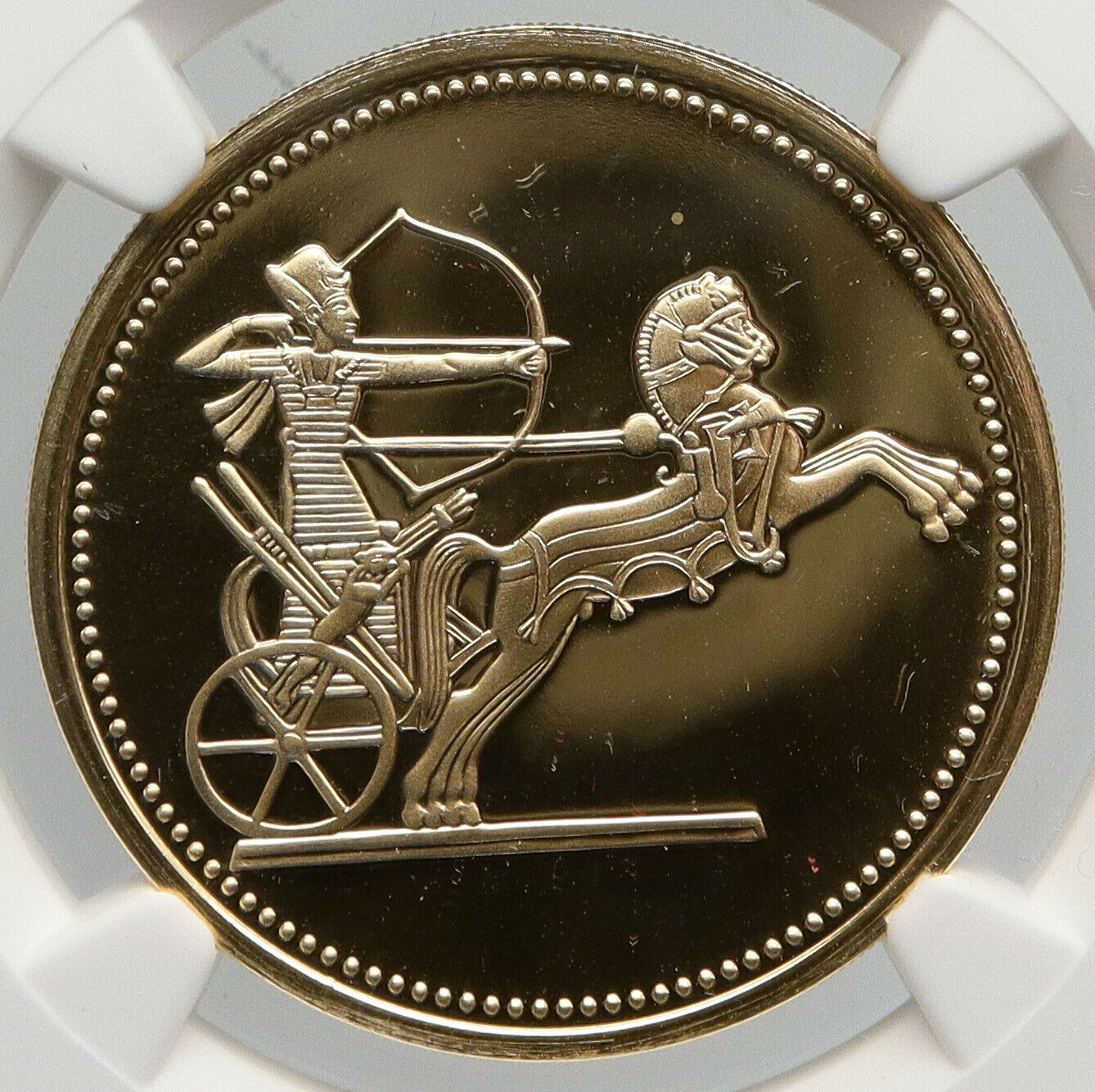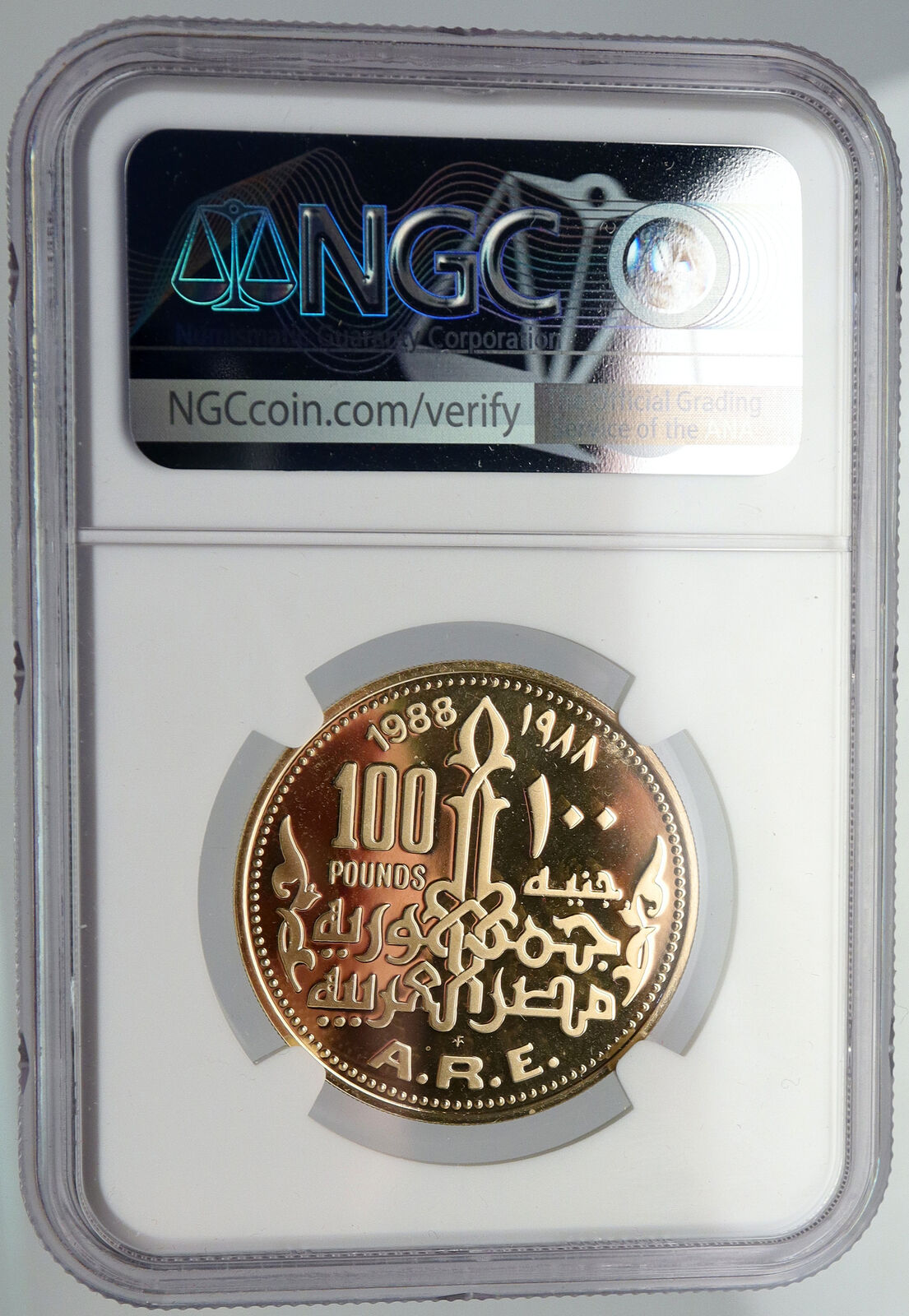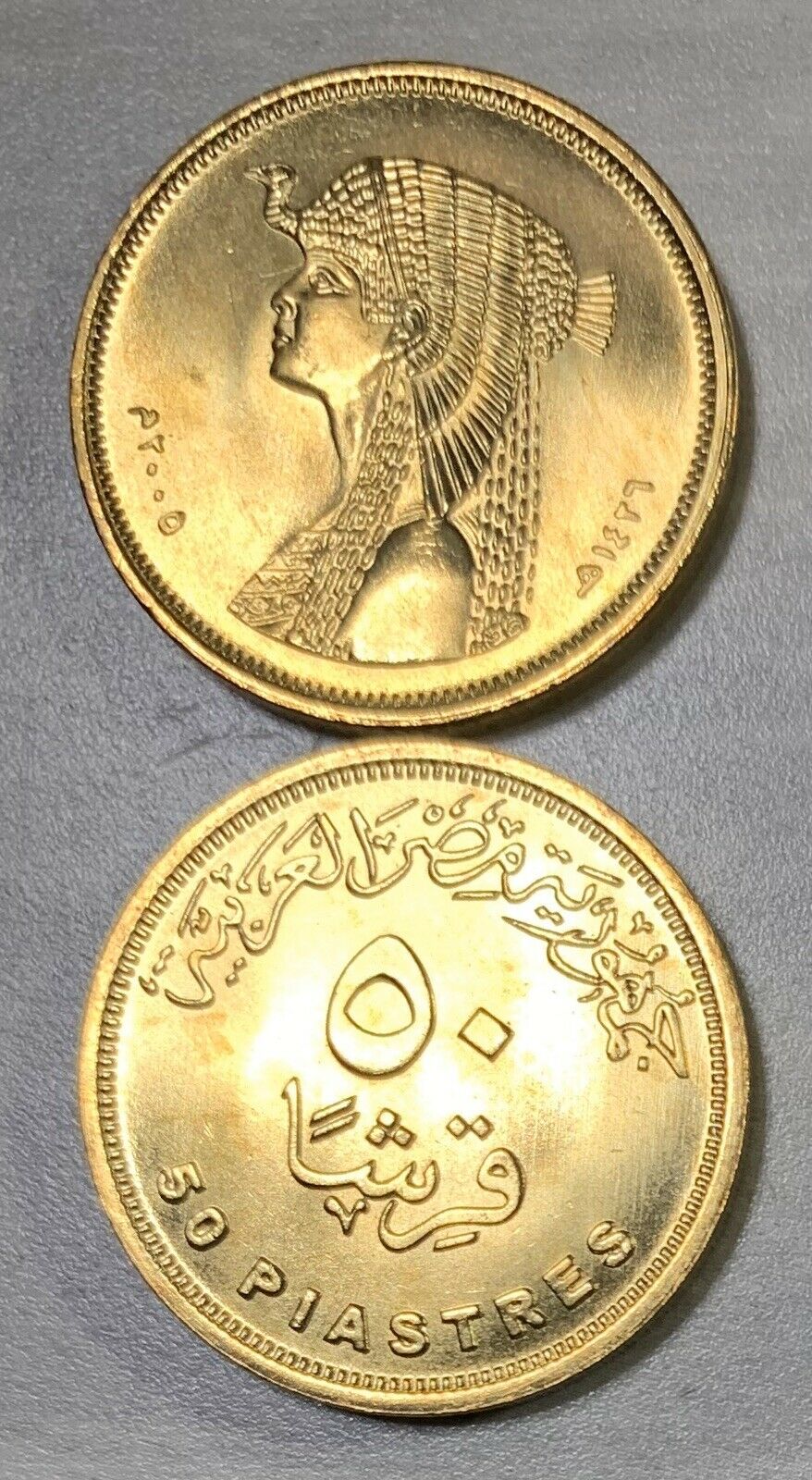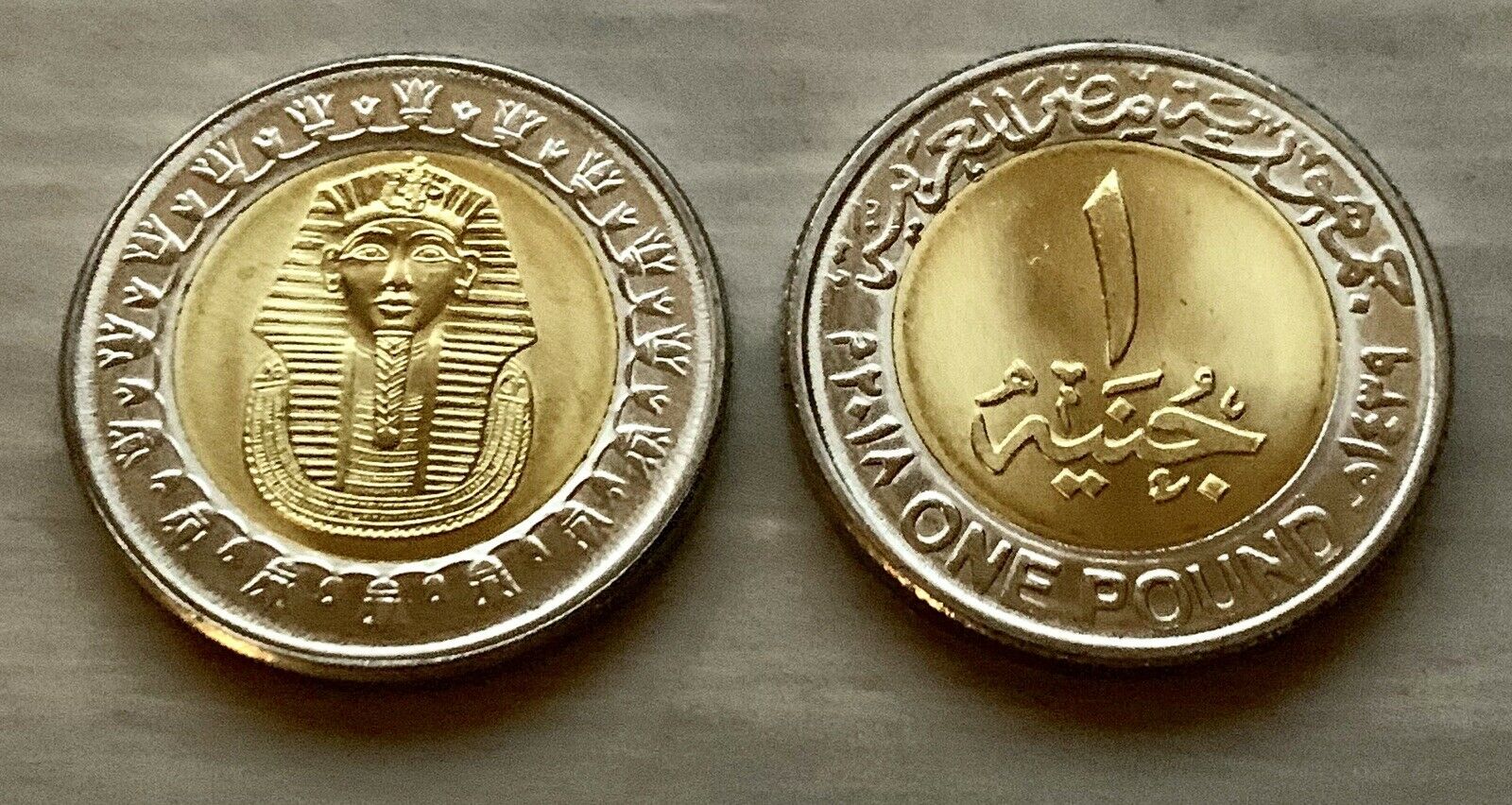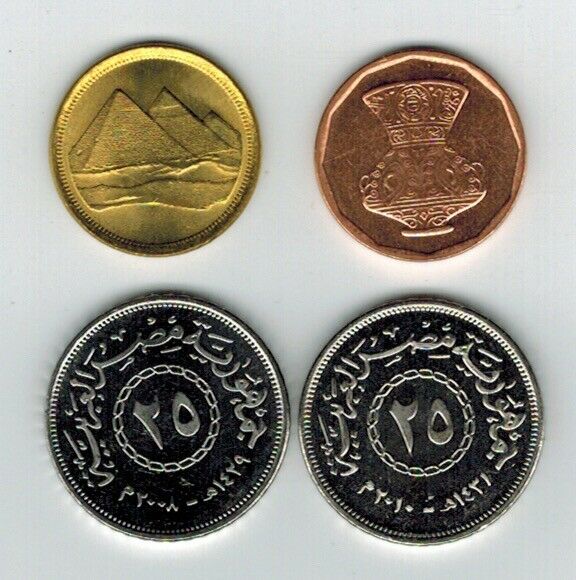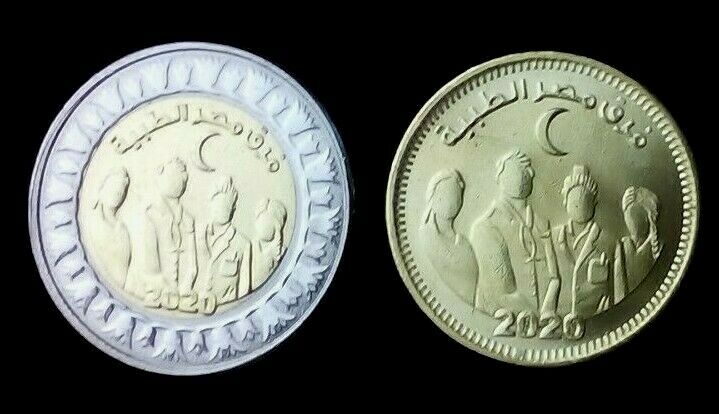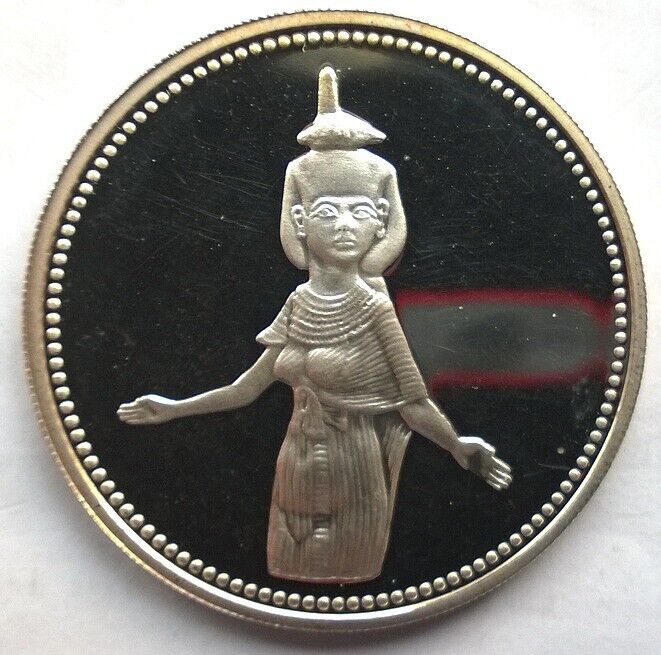-40%
1988 EGYPT Golden Warrior Chariot VINTAGE Proof Gold 100 Pounds Coin NGC i90652
$ 4038.48
- Description
- Size Guide
Description
Item:i90652
Authentic Coin of:
Egypt - Golden Warrior
1988 FM
Gold 100 Pounds
31
mm
(17.00 grams)
0.900 Gold (0.4919 oz. AGW)
Reference: KM# 648
Certification:
NGC
PF 69 ULTRA CAMEO 6056457-006
Golden warrior on Chariot, holding bow and arrow, horse rearing right.
1988 ١٩٨٨ 100 ١٠٠ POUNDS جنيه جمهورية مصر العربية A.R.E. , Ornate text.
You are bidding on the exact item pictured, provided with a Certificate of Authenticity and Lifetime Guarantee of Authenticity.
In ancient Egyptian society chariotry stood as an independent unit in the King’s military force. Chariots are thought to have been first used as a weapon in Egypt by the Hyksos in the 16th century BC, though investigation of materials long held in the Tahrir Square Egyptian Museum has potentially revealed the presence of chariots as early as the Old Kingdom (c. 2686–2181 BC). The Egyptians developed their own design of the chariot.
Archaeologist Joost Crouwel writes that "Chariots were not sudden inventions, but developed out of earlier vehicles that were mounted on disk or cross-bar wheels. This development can best be traced in the Near East, where spoke-wheeled and horse-drawn ‘true’ chariots are first attested in the earlier part of the second millennium BC...". The early usage of chariots was mainly for transportation purposes. With technological improvements to their structure (such as a “cross-bar” form of wheel construction to reduce the vehicle's weight), the use of chariots for military purposes began. The Egyptians invented the yoke saddle for their chariot horses around 1500 BC. Chariots were effective for their high speed, mobility and strength which could not be matched by infantry at the time. They quickly became a powerful new weapon across the ancient Near East. The best preserved examples of Egyptian chariots are the six specimens from the tomb of Tutankhamun.
Chariots were very expensive, heavy and prone to breakdowns, yet in contrast with early cavalry, chariots offered a more stable platform for archers. Chariots were also effective for archery because of the relatively long bows used, and even after the invention of the composite bow the length of the bow was not significantly reduced. Such a bow was difficult to handle while on horseback. A chariot could also carry more ammunition than a single rider. The chariot had a driver and one man with a bow.
However, the chariot also had several disadvantages, notably its size and its dependence on the right terrain. Their use has been compared to that of tanks in modern day warfare but this is disputed by scholars who point out that chariots were vulnerable, fragile and required a level terrain while tanks are heavily armored all-terrain vehicles. Chariots were thus not suitable for use in the way modern tanks have been used as a physical shock force.
Chariots would eventually form an elite force in the ancient Egyptian military. In field action, chariots usually delivered the first strike and were closely followed by infantry advancing to exploit the resulting breakthrough, somewhat similar to how infantry might operate behind a group of armed vehicles in modern warfare. These tactics would work best against lines of less-disciplined light infantry militia. Chariots, much faster than foot-soldiers, pursued and dispersed broken enemies to seal the victory. Egyptian light chariots contained one driver and one warrior; both might be armed with bow and spear.
In ancient Egypt, members of the chariot corps formed their own aristocratic class known as the maryannu (young heroes). The heroic symbolism can be seen in contemporary paintings in which the King is shown riding with the elites, shooting arrows at the enemies. This image became typical of royal power iconography in the New Kingdom. As chariots become increasingly integrated into military training especially during the regime of Amenhotep II, the chariot warrior was identified as
seneny
and was paired with the called
keijen
or
kedjen
, who also act as his defender. The
seneny
was trained to use the bow with accuracy even when the horse is at full gallop, a feat that Amenhotep II could reportedly do.
The best known and preserved textual evidence about Egyptian chariots in action was from the Battle of Kadesh during the reign of Ramses II, which was probably the largest single chariot battle in history. Kamose (1555–1550) has the distinction of being the first Egyptian ruler to use the chariot and cavalry units in battle, giving him victory. Accounts reveal that the Hyksos, who were lording over the northern territories in his reign, were startled when Egyptian chariots started to roll in the battlefield at Nefrusy, north of Cusae (near modern Asyut). The chariots were improved versions of what they used to terrorize the enemy.
Egypt
, officially the
Arab Republic of Egypt
, is a country spanning the northeast corner of Africa and southwest corner of Asia by a land bridge formed by the Sinai Peninsula. Egypt is a Mediterranean country bordered by the Gaza Strip and Israel to the northeast, the Gulf of Aqaba to the east, the Red Sea to the east and south, Sudan to the south, and Libya to the west. Across the Gulf of Aqaba lies Jordan, across the Red Sea lies Saudi Arabia, and across the Mediterranean lie Greece, Turkey and Cyprus, although none share a land border with Egypt.
Egypt has one of the longest histories of any country, tracing its heritage back to the 6th-4th millennia BCE. Considered a cradle of civilisation, Ancient Egypt saw some of the earliest developments of writing, agriculture, urbanisation, organised religion and central government. Iconic monuments such as the Giza Necropolis and its Great Sphinx, as well the ruins of Memphis, Thebes, Karnak, and the Valley of the Kings, reflect this legacy and remain a significant focus of scientific and popular interest. Egypt's long and rich cultural heritage is an integral part of its national identity, which has endured, and often assimilated, various foreign influences, including Greek, Persian, Roman, Arab, Ottoman Turkish, and Nubian. Egypt was an early and important centre of Christianity, but was largely Islamised in the seventh century and remains a predominantly Muslim country, albeit with a significant Christian minority.
From the 16th to the beginning of the 20th century, Egypt was ruled by foreign imperial powers: The Ottoman Empire and the British Empire. Modern Egypt dates back to 1922, when it gained nominal independence from the British Empire as a monarchy. However, British military occupation of Egypt continued, and many Egyptians believed that the monarchy was an instrument of British colonialism. Following the 1952 revolution, Egypt expelled British soldiers and bureaucrats and ended British occupation, nationalized the British-held Suez Canal, exiled King Farouk and his family, and declared itself a republic. In 1958 it merged with Syria to form the United Arab Republic, which dissolved in 1961. Throughout the second half of the 20th century, Egypt endured social and religious strife and political instability, fighting several armed conflicts with Israel in 1948, 1956, 1967 and 1973, and occupying the Gaza Strip intermittently until 1967. In 1978, Egypt signed the Camp David Accords, officially withdrawing from the Gaza Strip and recognising Israel. The country continues to face challenges, from political unrest, including the recent 2011 revolution and its aftermath, to terrorism and economic underdevelopment. Egypt's current government is a presidential republic headed by President Abdel Fattah el-Sisi, which has been described by a number of watchdogs as authoritarian.
Islam is the official religion of Egypt and Arabic is its official language. With over 95 million inhabitants, Egypt is the most populous country in North Africa, the Middle East, and the Arab world, the third-most populous in Africa (after Nigeria and Ethiopia), and the fifteenth-most populous in the world. The great majority of its people live near the banks of the Nile River, an area of about 40,000 square kilometres (15,000 sq mi), where the only arable land is found. The large regions of the Sahara desert, which constitute most of Egypt's territory, are sparsely inhabited. About half of Egypt's residents live in urban areas, with most spread across the densely populated centres of greater Cairo, Alexandria and other major cities in the Nile Delta.
The sovereign state of Egypt is a transcontinental country considered to be a regional power in North Africa, the Middle East and the Muslim world, and a middle power worldwide. Egypt's economy is one of the largest and most diversified in the Middle East, and is projected to become one of the largest in the world in the 21st century. In 2016, Egypt overtook South Africa and became Africa's second largest economy (after Nigeria). Egypt is a founding member of the United Nations, Non-Aligned Movement, Arab League, African Union, and Organisation of Islamic Cooperation.
Frequently Asked Questions
Mr. Ilya Zlobin
, world-renowned expert numismatist, enthusiast, author and dealer in authentic ancient Greek, ancient Roman, ancient Byzantine, world coins & more.
Who am I dealing with?
You are dealing with Ilya Zlobin, ancient coin expert, enthusiast, author and dealer with an online store having a selection of over 15,000 items with great positive feedback from verified buyers and over 10 years experience dealing with over 57,000 ancient and world coins and artifacts. Ilya Zlobin is an independent individual who has a passion for coin collecting, research and understanding the importance of the historical context and significance all coins and objects represent. Most others are only concerned with selling you, Ilya Zlobin is most interested in educating you on the subject, and providing the largest selection, most professional presentation and service for the best long-term value for collectors worldwide creating returning patrons sharing in the passion of ancient and world coin collecting for a lifetime.
How long until my order is shipped?
Orders are shipped by the next business day (after receipt of payment) most of the time.
How will I know when the order was shipped?
After your order has shipped, you will be left positive feedback, and that date could be used as a basis of estimating an arrival date. Any tracking number would be found under your 'Purchase history' tab.
USPS First Class mail takes about 3-5 business days to arrive in the U.S. International shipping times cannot be estimated as they vary from country to country.
Standard international mail to many countries
does not
include a tracking number, and can also be slow sometimes.
For a tracking number and signature confirmation, you may want to do Express Mail International Shipping, which costs more, however, is the fastest and most secure. Additionally you may be able to receive your order in as little as 3-5 business days using this method. For Express Mail International, it may be possible to place up to 10-15 items in one package (for the one shipping cost) as it is flat rate envelope, which may be the most cost-effective, secure and fastest way to receive items internationally. Send me a message about this and I can update your invoice should you want this method.
Getting your order to you, quickly and securely is a top priority and is taken seriously here.
Great care is taken in packaging and mailing every item securely and quickly.
Please be aware, I cannot take responsibility for any postal service delivery delays, especially for international packages as it may happen in rare instances.
What is a certificate of authenticity and what guarantees do you give that the item is authentic?
Each of the items sold here, is provided with a Certificate of Authenticity, and a Lifetime Guarantee of Authenticity, issued by a world-renowned numismatic and antique expert that has identified over 57,000 ancient coins and has provided them with the same guarantee. You will be very happy with what you get with the COA; a professional presentation of the coin, with all of the relevant information and a picture of the coin you saw in the listing. Additionally, the coin is inside it's own protective coin flip (holder), with a 2x2 inch description of the coin matching the individual number on the COA.
On the free-market such a presentation alone, can be considered a - value all in itself, and it comes standard with your purchases from me,
FREE.
With every purchase, you are leveraging my many years of experience to get a more complete context and understanding of the piece of history you are getting. Whether your goal is to collect or give the item as a gift, coins presented like this could be more prized and valued higher than items that were not given such care and attention to.
Buy a coin today and own a piece of history, guaranteed.
Is there a money back guarantee?
I offer a 30 day unconditional money back guarantee. I stand behind my coins and would be willing to exchange your order for either store credit towards other coins, or refund, minus shipping expenses, within 30 days from the receipt of your order. My goal is to have the returning customers for a lifetime, and I am so sure in my coins, their authenticity, numismatic value and beauty, I can offer such a guarantee.
When should I leave feedback?
Once you receive your order, please leave a positive feedback. Please don't leave any negative feedbacks, as it happens sometimes that people rush to leave feedback before letting sufficient time for their order to arrive. Also, if you sent an email, make sure to check for my reply in your messages before claiming that you didn't receive a response. The matter of fact is that any issues can be resolved, as reputation is most important to me. My goal is to provide superior products and quality of service.
How and where do I learn more about collecting ancient coins?
Visit the "
Guide on How to Use My Store
" for on an overview about using my store, with additional information and links to all other parts of my store which may include educational information on topics you are looking for.
